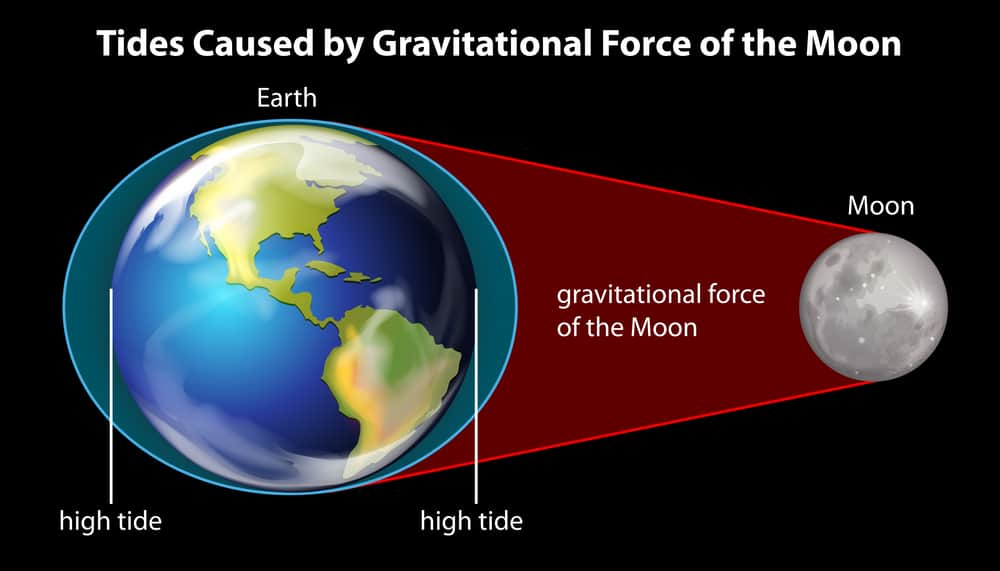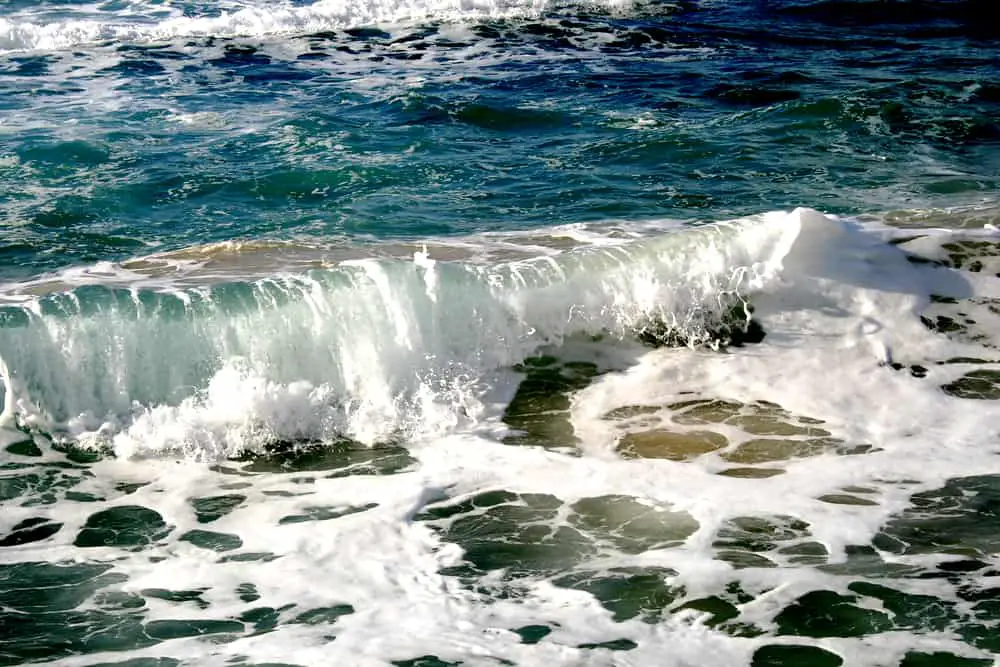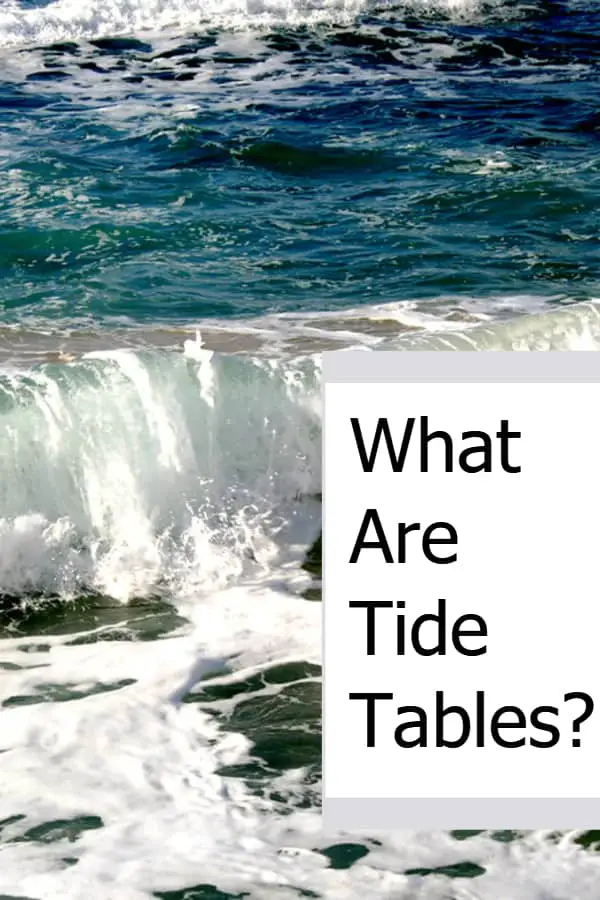What Are Tide Tables And Do You Need To Know About Them When Diving?
Tidal zones don’t just impact the sea creatures that reside in the area; they’re important to scuba divers as well. It is essential for you to figure out how tides work to ensure your safety and make each dive the most enjoyable one yet. The easiest is to read a tide table for the region you’re in.

Before we can delve into what tide tables are and how you can read them, we need to uncover the answer to a very important question:
What Are Tides?
Basically, tides are the rising and falling of sea levels due to a combined gravitational effect of the sun, moon, and Earth. Since the solar system is constantly moving (the planets orbiting the sun and the moon orbiting the Earth), the position of the sun, moon, and Earth keeps changing and results in different types of tides:
- Neap Tides – These tides form when the moon is perpendicular to the axis between the Earth and the sun.
- Spring Tides – These form when the sun, moon, and Earth are aligned.
Since the moon is so close to the Earth, it has a very strong impact on tide formation, and its gravitational force is what eventually leads to high and low tides. High and low tides are distinguished based on the tidal range – the depth of water at a specific point over the course of the day.
Research indicates that the ocean takes around 6 hours (and 12.5 minutes, to be exact) to switch from high to low tide and vice versa. This essentially means that the tidal range changes twice a day in most areas and you end up with two high tides and two low tides every day. The difference in height between low and high is the tidal range. The highs and lows of the tides can vary even within one day! Tide charts document that and give you an indication of the tides to expect. When the moon is the closest to the Earth, tides are higher than normal and vice versa.
On a local level, tides are impacted by a number of factors, such as the kind of ocean floor in the region, the type of coastline, and the overall climatic conditions, including wind speed and weather. For instance, a rocky inlet is more likely to increase the speed of tidal currents than an open island.
Moreover, pressure also impacts incoming tides – high pressure depresses sea levels and vice versa.
Since we’ve looked at the formation of tides in detail, this leads us to another important question:
What Impact Do Tides Have on Scuba Diving?
If you’ve been diving in your local region for years, you’re probably used to the weather and water conditions, and you know when the tide is low. This means that descending and ascending during your dive will be safe and easy. You may even hear the tide predictions on local radio stations or find them in the newspaper.
If you’re diving in a new, unfamiliar location, you need to do prior research and consult tide tables to ensure that the ocean and climatic conditions are conducive for diving.
Tides move huge amounts of water around in a matter of minutes (or less). They have a strong impact on the accessibility of certain dive sites and how deep you can go. For instance, during low tide, you may find some deep diving sites accessible, which are usually unreachable during high tide.
Furthermore, tides generate strong currents in the water that can be dangerous for divers who aren’t prepared for them. Tidal activity moves around particles in the water, which may even impact the level of visibility you have in the water.
Fortunately, apart from unnatural occurrences, tidal movements are generally predictable. Certain agencies, such as the National Ocean Service, are involved in the production of annual tide tables.

What Tide Is Best for Diving?
Apart from looking at high and low tides, we have to look at the different tides based on gravitational pull. These include the spring and neap tides we mentioned earlier. You also have to keep in mind that unusually high tides may also be possible, and some tidal cycles may have height variations within a single cycle.
The best time to dive is during slack high tide. During this time, the water is around 2-3 meters deeper than at slack low tide.
Why Is It Best to Dive at Slack High Tide?
During this time, the visibility in the water is the best, and you’ll have to cover a shorter distance between the shore and your point of descent (and ascent) since the water levels will have risen near the shore.
This not only makes your dive safer since it’s easier to get back to the land, but it also allows you to have a solid view of the ocean.
What Are Tide Tables?
Tide tables, also known as tidal charts or tide charts, provide tidal predictions – information about high and low tides for a specific location or region. A tide table may be in print or digital form and is usually published for major ports (commonly referred to as standard ports). Tide tables are only valid for a single year.
Commonly Used Terms in Tide Tables
Some terms you are likely to come across when reading your tide table include:
- Tidal current – the horizontal movement of water caused by tides.
- Slack – the time between high-low or low-high tide.
- A mixed tide – a tidal cycle with both high tides of unequal height and both low tides of unequal height.
- Zero tide height – a term used for Chart Datum (discussed in the next section).
- Diurnal – 1 tide cycle/day.
- Semi-diurnal – 2 tide cycles/day.
- Flood – incoming tide, eventually culminating in high tide.
- Ebb – flowing back of the tide, eventually culminating in low tide.
How Do You Read a Tide Table?
Generally, tide tables include the date, time, and height for high and low tides. Since tides’ heights are variable even within short distances such as 10-15 miles, tide tables provide you with the necessary instructions to adjust your calculations based on your exact location. Once you found the tide table pertaining to your location and date, you need to do the following:
Figure Out the Water Depth
You measure tidal heights against the Chart Datum, which is basically the plane of reference, or the average height of the low tide. Once you obtained the tide height in a particular area, add it to the Chart Datum to get the exact water depth at your desired time.
Find the Relevant Information on High Tides
The high tide is the larger figure displayed on the tide table and may sometimes be represented by a plus (positive) sign next to it. This number shows you the height of the tide above the Chart Datum (when the tide is at its highest crest). These measurements may be in meters or feet depending on the tide table.
Keep an eye on the time zone used in the tide table since you may need to convert it based on the region you are in to find data according to your local standard time. This step is extremely important since it will impact the tidal information you obtain, and thereby, also your dive conditions.
Some tide tables may be in the form of a graph, but the data they provide is still the same.
Find the Relevant Information on Low Tide
The low tide is the smaller number on the tide table and may be represented with a minus sign next to it. If this number is positive, the depth of the water at the lowest trough will still be above the Chart Datum. Otherwise, it will fall below this average water level.
Using the Rule of Twelves to Read a Tide Table
If you just want the height of the water during high and low tide, you can obtain these figures using the Rule of Twelves – the premise of this rule is that tides fluctuate over a period of around 6 hours (as we mentioned earlier), and range of tides may be divided into 1/12th units.
Using this rule on the figures of the high and low tides, you can obtain data with regards to the height of the water at any given time.

Dive Safely
Since we covered the fact that slack high tide is the best time to dive, you need to look for the local time when the ocean will be in this state based on the local tide tables. If the water and weather conditions seem satisfactory, it’s time for you to get in the water.
Typically, it will take around an hour for the tide to strengthen, so set your dive computer accordingly. If you feel like the tide is rising faster than planned, trust your instincts and end your dive safely and early. You’ll be able to gauge this based on the visibility in the water, the direction the fish are going in, and how much effort you need to exert to swim.
Don’t let the tides hinder your scuba dives. With proper planning, you can have a new diving experience without worrying about your safety.
We would appreciate it if you could use the image below to pin to Pinterest if you liked the article.

